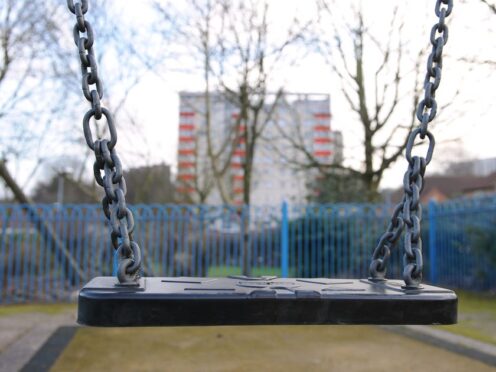Rishi Sunak claimed in a campaign speech in London on July 2 that the Conservatives have reduced child poverty since coming into power in 2010.
Evaluation
By one of the Government’s four official indicators, the percentage of children in poverty decreased between 2010-11 and 2022-23, although the overall number increased.
However, the other three indicators show an increase in both the percentage and number of children in poverty.
The facts
In a speech in London on July 2, Rishi Sunak said “we reduced child poverty”, as part of a list of claimed achievements since the Conservatives came to power in 2010.
It repeats a claim he has made previously, when launching the Conservative Party manifesto ahead of the General Election.
The Government uses two main indicators of poverty. The first is relative low income: the percentage of people living in households with income below 60% of the median in that year.
The second is absolute low income: the same principle, but compared to 60% of median income inflation-adjusted against a base year, usually 2010-11.
Each of these figures are presented both before and after housing costs are taken into account.
The Conservatives entered government in May 2010, initially in a coalition with the Liberal Democrats until 2015.
On one of the four official measures, absolute low income after housing costs, the percentage of children in poverty has fallen from 27.2% in 2010-11 to 25.0% in 2022-23, the most recent financial year for which figures are available.
By that definition, the overall number of children in poverty has increased by more than 27,000, with more than 3.6 children in absolute low income after housing costs in 2022-23.
By the other three indicators, both the percentage and number of children in poverty has risen. Most extreme is the rise in the percentage of children in relative low income before housing costs, from 17.5% in 2010-11 (2.3 million children) to 22.4% in 2022-23 (3.2 million).
The Resolution Foundation forecasts child poverty to increase over the next five years, estimating 170,000 more children will be in poverty in 2027-28 than in 2021-22.
Links
YouTube – Sky News: Boris Johnson makes surprise appearance at Conservative event (archived – downloads as audio file)
Big Issue – ‘How dare he’: Sunak claims the Tories have reduced child poverty – but it’s not exactly the truth (archived)
House of Commons Library – Poverty in the UK: statistics (archived)
House of Commons Library – The 2010 Coalition Government at Westminster (archived)
UK Parliament – General Election 2015: results (archived)
Gov.uk – Households Below Average Income, 2022/23 (archived, opens as .ods file; relevant data in tabs 1_4a and 1_4b)
Resolution Foundation – The Living Standards Outlook 2023 (archived)
